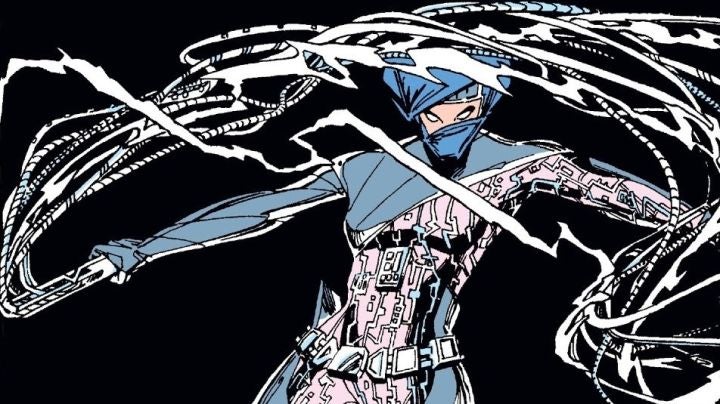EA and Respawn Entertainment are introducing a new Apex Legends battle pass structure, but players aren’t happy with the changes promised so far.
This new take on progression in the Titanfall spinoff was announced with an update post on the game’s website. The post outlines a litany of fundamental changes to how rewards are earned, with the team saying that its goal is to “improve your experience and progression goals.”
Starting with Season 22, we’re evolving the Apex Legends Battle Pass to improve your experience and progression goals.
Read on to learn everything to know about the upcoming changes or check out the infographic below to learn more.
📃: https://t.co/kg5NhlFfVq pic.twitter.com/i516ktP9ma
— Apex Legends (@PlayApex) July 8, 2024
Where players will find the biggest changes are the length of the Battle Pass and how future passes will be purchased. Up to this point, Battle Passes have required players to complete 110 levels to acquire all rewards, including one Reactive Weapon and a Reactive Weapon Variant. But Season 22 will deliver two passes – one for the first half and one for the second – with 60 levels to complete each. Both halves include one Reactive Weapon each.
“The impact of this change is twofold,” the post says. “It allows us to align seasonal progression more closely with Ranked while also increasing the value for your time.”
EA and Respawn claim that the new structure will result in twice the seasonal rewards for Apex Legends players who use the free version of the battle pass. However, each half-season Premium pass will now cost $10, and the option to purchase passes with Apex Coins is being removed. Players have previously been able to earn 200 coins with the free version of the pass and 1300 coins through the Premium version of the pass, which costs 950 coins.
Each pass will offer the same number of coins for free and Premium players, which means double the amount of earnable Apex Coins per season, but those who have been saving up their coins will no longer be able to use them for future passes.
Other tweaks to the Premium Apex Legends formula increase the number of Apex and Legend-Themed packs while doubling the amount of crafting materials in the Premium pass. The Premium Bundle, which was previously purchasable for 2800 Apex Coins, is now called Premium+ and costs $19.99. It includes only 10 level skips while offering more Exotic Shards, two Premium+ Legendary Character Skin Variants and the ability to play all Legends for the duration of the battle pass.
All of the changes will go into effect with Season 22, which is expected to launch next month.
“The decision to move from AC to real world currency is not one that we made lightly, but it does allow us to decrease the price of Premium+ for our community,” Respawn’s post says. “The new Premium+ Battle Pass comes in at $19.99 USD* and offers additional value; a cost difference of ~29% when compared to the discontinued Premium Battle Pass Bundle at 2800 AC.”
Apex Legends fans react to the new Battle Pass
So far, Apex Legends players aren’t too happy with the changes.
“So basically pay 10 dollars twice a season instead of being able to continue buying battle passes every season with a one time purchase,” one Reddit user said. “In what world is this better for players?”
“The advantage of gathering enough coins to buy the next BP via gameplay was that I was basically stuck with playing your product for dozens of hours on end, so engagement was high,” another user added. “If you’re gonna make me pay every time and THEN grind my ass off then that’s it brother.”
I’m glad apex legends in season 22 otherwise known as shockwave is finally changing the battlepass. At least a little bit. Only problem is they are charging double and introduced splits to the battlepass. I hate EA. Thoughts? pic.twitter.com/Tj29js2Nk5
— Thordan Smash (@Thordansmash) July 8, 2024
I’m confused. So if we pay the $10, we have access to both splits? Because that’s not very clear. I’m not giving anymore than that because that’s how it’s been for over 5 years… also, if I can’t use already earned coins to help pay for the Battle Pass, I won’t support it at all
— Corey Cooper (@MetroidFREAK21) July 8, 2024
$40 + tax every season for the full battle pass 🥸
— Esidi (@esidixo) July 8, 2024
Apex Legends was released in 2019 and has continued to evolve in the half-decade since its launch with more playable Legends, weapons, abilities, maps, and game modes. Though the ability to purchase battle passes with coins is on the way out, players can still use them on Legends, Apex Packs, and more in the in-game store.
EA adds that players will be able to unlock the first half of Season 22’s premium battle pass offerings by completing “a set of challenges” within the first two weeks of launch. It’s currently unclear what these challenges entail or if this method will be available in future seasons. For more, you can read our list of the 15 best free games to play on PlayStation 5.
Michael Cripe is a freelance contributor with IGN. He started writing in the industry in 2017 and is best known for his work at outlets such as The Pitch, The Escapist, OnlySP, and Gameranx.
Be sure to give him a follow on Twitter @MikeCripe.




















